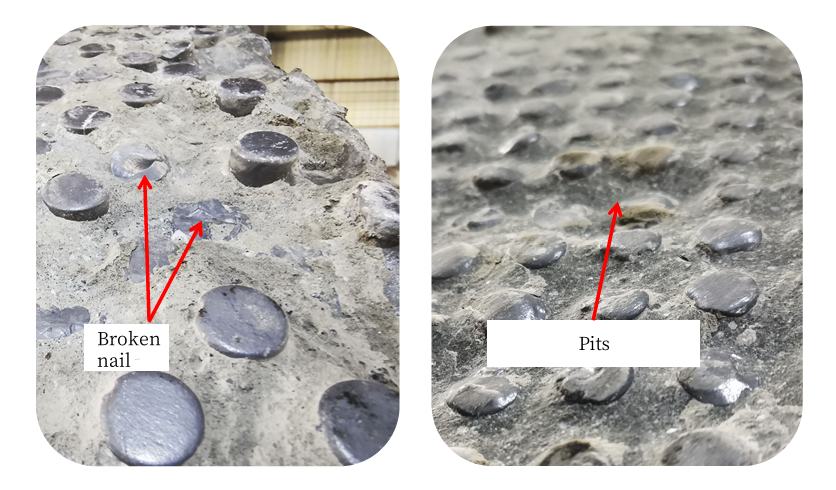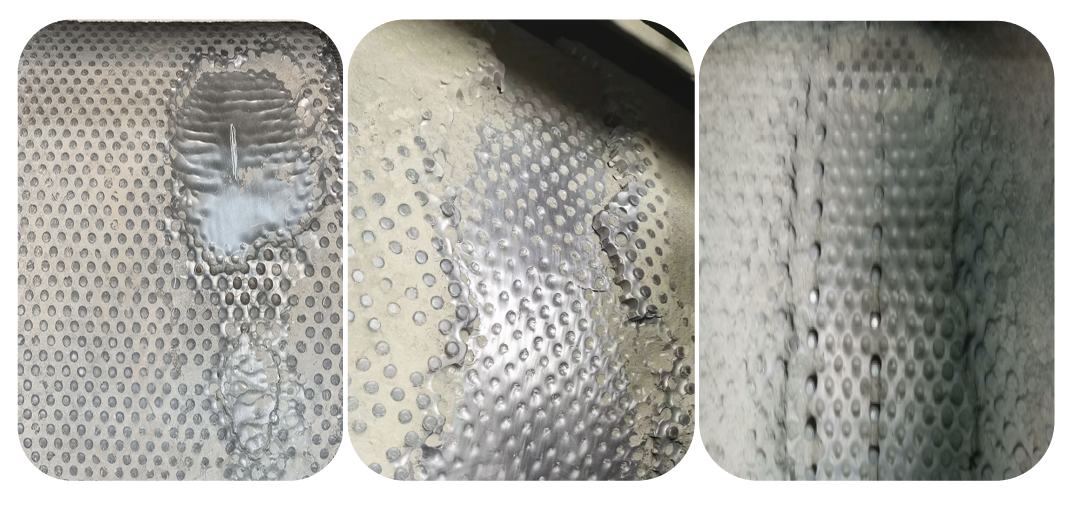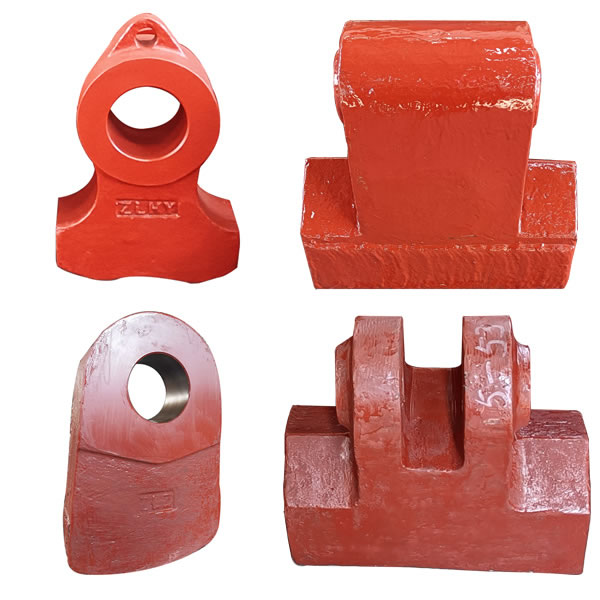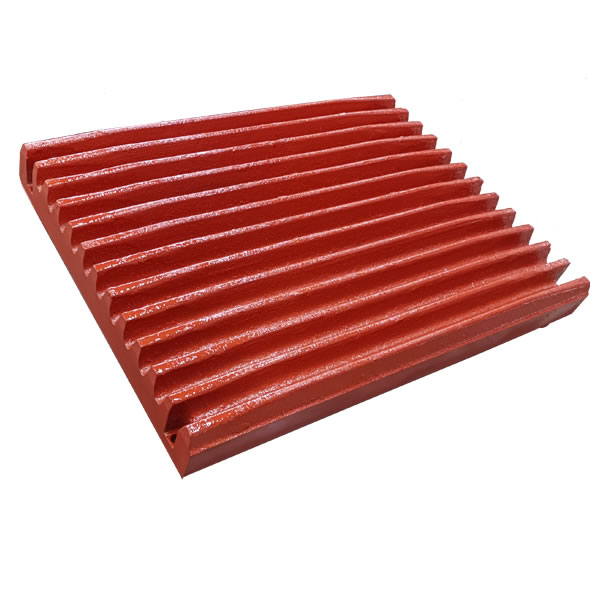Detailed explanation of the failure forms of column nail rollers
- 2025-04-25
- view count:
Zili New Materials Company has been engaged in the roller press roller production and repair industry for many years and has rich experience. Column nail rollers are new products that have been used more frequently in recent years. We have summarized the main manifestations of column nail roller failure for reference by industry insiders. In addition to normal wear, the main failure forms of column nail rollers are as follows:
1. Broken nails
Generally, the column nail diameter of the column nail roller is 16mm~Φ22mm. After the column nail is installed on the roller sleeve base, it is 3~5mm higher than the base surface as an anti-wear layer.
Due to the limited column nail diameter and the high hardness and weak impact resistance of tungsten carbide, after large pieces of material and metal foreign matter enter between the two rollers, when a single column nail is subjected to a large impact force in the radial direction, the column nail is prone to "broken nails". After the column nail is broken, since a material pad cannot be formed around the broken column nail, if the broken nail is not replaced in time, the base around the broken nail will accelerate wear due to the lack of material pad protection, forming pits. The pits also cause the surrounding column nails to expose too much of the base, making it easier to break.
For the above reasons, during the use of the column nail roller, the control requirements for large pieces of materials and metal foreign bodies need to be extremely strict.
However, due to various objective conditions, it is difficult for most on-site materials to reach the ideal material conditions of the column nail roller.

2. The fatigue of the roller sleeve matrix produces large-scale shedding
When the column nail roller is under pressure, the pressure directly acts on the top of the column nail, and then is transmitted to the bottom of the matrix hole through the column nail. The top surface of the column nail of the column nail roller is generally 3~4mm higher than the surface of the roller sleeve matrix. When the roller is under pressure, the pressure on the column nail is generally higher than the pressure on the matrix surface. In the actual use of the roller press, there are two situations that will cause the matrix pressure to increase exponentially:
1) Local pressure on the roller surface;
When there are large pieces of material and metal foreign bodies between the two rollers, the roller surface will be in a state of local pressure at the moment of extrusion. At this time, the pressure on the column nail and
the matrix will increase several times compared to when it is uniformly compressed. Calculated at 5 times the pressure, the pressure on the matrix will reach more than 1500MPa, which will exceed the yield strength of the matrix (the yield strength of the matrix of the conventional stud roller is about 1000~1200MPa). In addition to the influence of alternating stress, fatigue cracks will appear at the bottom of the matrix hole of the stud roller after long-term operation. When the fatigue cracks at the bottom of each local matrix hole continue to extend and finally intersect, the matrix will show "delamination".
2) The contact surface between the stud bottom and the matrix hole is insufficient;
In the matrix hole processing of the stud roller, due to tool wear, the spherical dimensions of all stud hole bottoms of a stud roller will have different degrees of tolerance. In addition, there is also a certain tolerance range when processing the ball head at the bottom of the tungsten carbide stud. The superposition of these two factors has caused the stud bottom and the matrix hole to fit 100% after assembly only in a theoretical state. When the tolerances of the stud and the hole do not match, there may be a state of local contact or line contact between the stud and the hole, which will increase the pressure of the matrix hole several times when it is under pressure (for example, when the stud ball head is in contact with the hole for only 25% of the area, the local pressure on the matrix hole is 4 times the pressure on the top of the stud). The pressure far exceeds the yield strength of the material and the influence of alternating stress will cause fatigue cracks to appear at the bottom of the matrix hole after long-term operation of the stud roller. When the fatigue cracks at the bottom of each local matrix hole continue to extend and finally intersect, the matrix will show "delamination".

This is a common failure form of stud rollers. Our company can provide new rollers or repair them on the original basis. The specific plan depends on the actual situation. Customers who have problems with roller wear can communicate with us and we will provide a full range of services.


